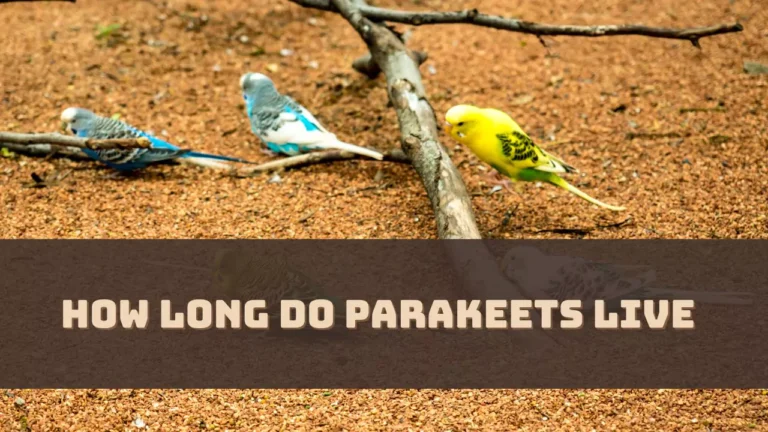Yes, Hawks can hunt during the night, but they prefer not to. They are seen hunting during the day and exhibit different hunting techniques. However, even if they have the instinct or capability to hunt in low light conditions, they are not well adapted for nighttime hunting.
So, let’s get to the depth and know whether a hawk is capable of hunting during the night.
Can Hawks Hunt at Night?
Among the many variants of hawks, the red-shouldered hawk is known to hunt during the night, they have excellent vision and even if there is low light, they can spot the prey from miles away. This species of hawk chooses to hunt during the dusk and dawn. However, they are primarily diurnal creatures as their vision gets less effective at night.
5 Hunting Instincts of Hawk at Night
Here are some of their noteworthy hunting instincts:
Species Specific Behavior
Most hawks hunt during the day, but some are also seen to hunt in low-light conditions. This change is seen as a part of adapting to the necessity and opportunity to find prey easily.
Seasonal Variation
During the winter, the hunting hours are extended to twilight and early nighttime hours as during this time of the month, the days get shorter. So, the hawks get more time to locate food even in harsh conditions.
Environmental Factors
If the hawk dwells in the urban region, then the lighting alters their hunting pattern. The hawks are encouraged to hunt during the unconventional hours of the day, as the urban artificial lights create a pseudo-daylight condition.
Prey Activity
The hawk tries to adjust their prey time based on the prey’s activity. If their prey is nocturnal or remains active only during dusk or dawn, then hawks schedule the time accordingly.
Moonlit Nights
Hawks take advantage of full moon nights when their visibility to hunt the prey increases. These nights also make it easier for the hawks to catch fish that come near the water’s surface.
What are the Hunting Habits of Hawks?
Hawks belong to the family Accipitridae, having exceptional hunting skills and they are admired for their agility in hunting. being diurnal hunting, leaving the exception, they use their keen eyesight to catch the prey. They have 8 times more powerful vision than humans and also track their prey from great heights.
Their common hunting technique is to soar high above on their territory, scan the areas, track their prey, and unsuspectedly they swoop down with incredible speed to catch their meal.
What is the Diet of Hawks?
Hawks have a wide range of diets, which is based on their adaptability, environment, and habitat. They generally feed on small mammals, such as mice, squirrels, rabbits, and small birds. They also feed on snakes, frogs, fish, and insects.
What are the Hunting Strategies of Hawks?
Hawks employ different hunting strategies such as –
Aerial Pursuit
It is a fast-paced hunting technique that is seen in hawks living in deep forests where they need to surprise their prey to catch them. Hawks use acrobatics and speed to catch their prey, which are mostly small birds.
High Soaring
With the help of their large wings, hawks soar the high altitudes and keep aloft for a long time. This technique builds stress among their prey and when the hawks are ready to kill, they swoop down and using the talons catch the prey, which are usually smaller mammals, rodents, geese, etc.
Low Soaring
If the hawks dwell in an open habitat, they tend to fly close to the ground in a straight line to catch the prey and this hunting technique is called low soaring. Here they are seen to move faster and the prey gets startled by the fast movement and becomes scared which makes them easy targets to get attacked.
Co-operative
Hawks are seen to work in groups to catch prey if it is a large catch. While employing a cooperative hunting strategy, one hawk is seen flying into the areas of the prey, which creates a panic and they start to run, and this is when the other hawk approaches and makes the kill.
Hover and pounce
In this hunting technique, the hawk is seen flying low over open areas to track and hunt small animals. They start hovering over the animals and directly dive down to pounce and catch the prey.
Perch and Swoop
While employing this hunting technique, the hawks are seen perching on a tree branch and scanning their hunting area. When a prey is spotted, they swoop down and hold it with their sharp talons.
Hunting Patterns by Different Hawks
The choice of hunting pattern for hawks is highly influenced by the physical characteristics, prey preferences, specific habitat, and environmental conditions. So, different species of hawks, exhibit different hunting techniques, such as –
Red-Tailed Hawks
Red Tailed Hawks are typically seen in North America and they remain active during the day. They employ the “Still Hunting” Strategy and perch on a high tree branch. They scan the entire area and when the prey is spotted, these hawks swoop down and catch one.
Northern Goshawks
Northern Goshawks are seen in forested areas and they use high speed to catch their meal. These hawks are seen to hunt during the day.
Sharp-Shinned Hawks
Sharp-shinned hawks are the smallest American hawks and they apply the technique of being stealthy and agile. They attack their prey by surprise or ambush them and are mostly seen to target small birds.
Cooper’s Hawk
Cooper’s Hawk are mainly seen near the woodland and prey on small birds and animals. They employ an “ambush” hunting style, where they startle the prey, rather than chasing it, to catch and feed on it. They mostly hunt during the dawn and dusk.
Why Do Hawks Prefer Day Time for Hunting?
Hawk’s eyes are adapted to spot prey from great heights in the daylight. While soaring in the sky they can detect a slight movement of the target prey. This acute vision becomes highly beneficial when coupled with daytime hunting. They also rely on thermal, which are rising warm air columns and these help them to soar and glide, helping them to save as much energy as possible. Thus, during the day, with minimal effort, hawks can cover vast areas in search of prey.
However, they might have to extend their hunting hours during winter when the food availability gets less, or breeding season as the demand for food and nutrition increases. So, hawks are seen to practice nocturnal behavior only when there is a necessity.
Is a Hawk’s Vision meant for Night Hunting?
When compared with nocturnal hunters like owls, the hawk’s vision is not adapted for night hunting or absolute darkness, but they can catch prey in low light or during moonlit nights. They have large eyes relative to body size so that light can enter and they can see during dusk and dawn. There is a high concentration of rod cells in the retina which helps to detect light and based on that the shape and movement alters.
Hawks have high cell density in their eyes, providing them with superior resolution and sharp vision, which functions almost like binocular vision. Their pupils have also adapted to stay open wide in low light and the tapetum lucidum reflects the light to increase visibility, which is similar to the vision of cats and deer at night.
What Challenges Do Hawks Face During Night-Time Hunting?
A hawk’s eyesight is not equipped to hunt or spot the prey easily in darkness, so during night hunting, they are unable to detect whether it is a prey or a potential threat. They are unable to navigate through the dense forest or fly above rugged terrains. Due to low visibility, they also face competition from nocturnal predators, such as owls.
However, during the brighter phase of the lunar cycle, hawks can achieve a successful hunt but with effort. During the night, often the temperature drops, which affects the hawk’s ability to fly and hunt at night. Also, if they come in close contact with larger predators, then it can pose a threat.
How Humans Affect the Hawks Hunting?
Human-induced changes affect the hawk either directly or indirectly. Due to habitat loss, there is a decrease in the availability of prey so to survive they need to spend hours looking for food sources. This situation has also increased the risk of death due to starvation.
Light pollution affects the nocturnal hunting behavior of the hawk and it also affects their ability to see during dawn and dusk, exposing them to the risk of collision with man-made structures. Due to noise pollution, they are unable to detect their potential prey as its sound gets masked due to traffic or machinery sound.
Altogether, climate change has also affected the behavior distribution and behavior of the hawk’s prey, making it difficult to adjust to the sudden geological changes.
Can Hawks Use Echolocation for Night Hunting?
No, hawks do not possess the ability of echolocation or use sound waves to detect prey at night.




